Brevis...
Price: $$5,000/$5,997.50-LC265.1vf
$4,820/4,900-LC265.1f
Likes: smoothest speaker ever?
Dislikes: cramped speaker jacks
More info: Westlake Audio
by John Gatski
I have been using the Westlake LC265.1f center channel speaker for more than 10 years as my primary center channel transducer in my home cinema system. I have declared, steadfastly, over the years that this speaker, with its dual 6.5-inch bass drivers and concentric midrange tweeter, is the most natural dialogue speaker I have ever heard. In reality, the design, when put into duty with a pair of vertical LC265.1vf's, is good for any kind of audio: movies, music galore, sound effects, you name it, the LC265.1 series never ceases to impress — with linear, smooth, accurate, aural projection.
Features
The LC265.1vf and the LC 265.1f have been refined a bit over the years, but the three-way speaker still centers around the dual 6.5-inch bass driver with five-inch concentric midrange/1-inch tweeter, housed in a slender, heavy, front-ported cabinet. The Hi-Fi versions are available in a walnut veneer finish at $11,995 per pair. The Pro series are available in an attractive black at $10,000 per pair. The LC265.1f center speaker is $4,900 in the walnut finish or $4,820 in the pro black.
The two 6.5-inch woofers provide linear bass down to 42 Hz. The crossovers are centered at 180 Hz for the midrange and 4 kHz, a perfect blend that makes this speaker stunningly smooth at those crucial frequencies. Overall rated frequency response is 42 Hz to 20 kHz, within a tight 3 dB window. Nominal impedance is 5 ohms.
The two 6.5-inch woofers provide linear bass down to 42 Hz. The crossovers are centered at 180 Hz for the midrange and 4 kHz, a perfect blend that makes this speaker stunningly smooth at those crucial frequencies. Overall rated frequency response is 42 Hz to 20 kHz, within a tight 3 dB window. Nominal impedance is 5 ohms.
The speaker is fairly efficient, with 91 dB SPL at 1-watt/1 meter. Power handling is up to 400 watts in short term peaks (140 watts RMS continuous). The back panel features bi-wire jacks for separate wiring of the tweeter/midrange and bass drivers. A jumper cable is included to allow it to be used with single-ended termination cables. The vertical versions are 27-inches tall, 9.25-inches wide and 12-inches front to back. Weight is a hefty 65 pounds. The horizontal version is not quite as wide as the upright brethren, about 5-inches. The weight is a few pounds lighter as well.
 |
| Concentric mid/tweeter in LC265.1 |
Westlake’s custom-made birch cabinets are works of art. With their roots in pro audio, the driver housing is rigidly braced, and extremely inert so as to not compromise the sound of the superb drivers. Westlake’s Glenn Phoenix has spent years perfecting the speaker cabinet to the point that it does not affect the sound, at all. Even dispersion characteristics are kept amazingly coherent thanks to the simple, but effective speaker muffs that are optionally available.
By the way, the Westlakes look pretty with the grills on, but they are made to be played with grills off; the response is a bit more open on top. I did not have any of optional muffs that are designed to further optimize dispersion, but I was impressed with the speakers’ spread without them.
One piece of technology my original LC 265.1f does not have is the Low-PE distortion passive circuit. Now in all Westlake speakers, the unique termination technology is said to reduce harshness and add focus to almost any audio component, including speakers, by eliminating a nearly undetectable low-level distortion that is inherent in all electronic components.
One piece of technology my original LC 265.1f does not have is the Low-PE distortion passive circuit. Now in all Westlake speakers, the unique termination technology is said to reduce harshness and add focus to almost any audio component, including speakers, by eliminating a nearly undetectable low-level distortion that is inherent in all electronic components.
Although the USA-designed and manufactured Westlake speaker models don’t come cheap (the lowest price is about $4,000 per pair for the small LC475s), in audiophile terms, the speakers are not the least expensive or over the top in terms of price.
The set up
I auditioned the Westlake LC265.1vf pair and LC 265.1f center as a high-end home cinema front speaker system, in conjunction with my LC 8.1s, for surround channels, enabling quite a capable 5.1 Westlake system. The speaker system also was used to play not only Blu-ray movies and concerts, but also high-resolution surround audio from 24-bit and SACD sources. A properly setup, accurate main/surround speaker system can project the music in about as life-like a fashion as capable through electronic reproduction.
The test surround system consisted of an Audio-Control AVR-4 receiver — the most audiophile of any A/V receivers that I have auditioned — the Westlake speakers, a Paradigm Sub 15 active subwoofer, and an Oppo BDP-95 universal player. I used Alpha-Core solid-silver speaker cables in a single-ended termination with the LC265.1vf’s and LC265.1f, and the components were plugged into an Essential Sound Products Essence II power strip using Essence II power cords.
After years of listening to my original center channel LC265.1f, these speakers have an amazingly smooth character that ekes out the most natural mid/low-treble in vocal reproduction that I have ever heard. Compared to other speakers with metal domes, ribbons and even other textile material drivers, the LC265.1vf or LC265.1f has no edge, hardness or unflattering high-frequency artifact. In comparison to some zingy-sounding, metal-driver tweeters, the Westlakes might, initially, sound slightly dull, but measurements show that it has response to 20 kHz, but without unnatural peaks. The more you listen to it, especially at louder levels, the more you will appreciate the uncolored audio finesse.
The audition
With movie soundtracks, the Westlake's smooth uncolored top end made for much-less aural fatigue at aggressive levels. With the Avatar soundtrack, a spectacular, open, sound-effect cued mix, the dynamic range dazzled my ears, at 94 dB+ levels, but I did not hear the harsh artifacts on the high-mid/low treble that I have heard on lesser speakers. And the crossover range is just absolutely perfect.
If you want accuracy with a smooth, no-hype treble character in your mid-sized loudspeakers, the Westlake LC265.1vf and LC265.1f should be on your short list of speakers to buy.
Though I ran the .1 LFE channel with the powered sub, I left the L- and R- LC265.1vf’s in full-range mode, and they performed well down to under 45 Hz. Plenty of bass for music and quite a bit of home theater bass.
In playing samples from the Bruce Willis — Live Free or Die Hard, the opening action sequences with dynamic explosions and gun fire coming from every direction, the LC265.1s, again, projected the aural aggression with smooth precision. This soundtrack has literally hurt my ears at 90 dB+ on other speakers, but again, the peak levels went to 94-95 dB, yet no audible hardness.
As previously mentioned, the coaxial midrange/tweeter makes for center channel perfection when it comes to vocal clarity and accurate portrayal of the human voice. I don’t think there is a better speaker for the human voice reproduction. On the English Patient Blu-ray, the voice overs are well centered and the speaker clearly projects the Euro-accents that abound in this epic film. No weakness or thinness, excessive sibilance or exaggerated nasal quality at all. Just an accurate relay of the mic’d voices made for this movie.
On Blu-ray after Blu-ray, the more I watched and listened, the more I was convinced that these are about as good a main channel speaker system as you can invest in for home cinema use. If you want to set up a seven or nine channel system, you can buy more LC265.1s, or to save a bit you could use the LC8.1s or LC4.75s as auxiliary channel speakers.
With high-resolution, 24-bit/SACD surround and stereo music, the LC 265.1vf’s were just as impressive as the cinema playback. The clarity of the treble, and the tight, quick bass, were obvious from the first listening sessions. The DMP label Warren Bernhardt — So Real surround SACD (long out of print) was a sonic treat through the Westlakes. This Tom Jung surround recording is mixed very naturally so that the extra speakers help convey the additional sound around the room, in the way a live studio performance is heard. Everything perfectly in its place. The LC265.1vf’s relayed that ambient accuracy with its analog smooth character. The Steinway grand piano tone was perfect, and the drum cymbals were metallic, but not brash; yet there was an air of extra dimension that you hear in a real performance.
The Westlake speakers are fairly uniform in their dispersion, horizontally and vertically, thus, you can sit just about anywhere in a typical surround room and hear all the music. The 40-Hz bass was plenty low for most pop and jazz music I played. The front ports augment the bass, but never impart any slowness or thickening of the mid bass. Westlakes have always had tight, yet low extension in the bass without resorting to extra tricks.
The Warren Bernhardt — So Real surround SACD was a sonic treat through the Westlakes. This Tom Jung surround recording is mixed very naturally so that the extra speakers help convey the additional sound around the room, in the way a live studio performance is heard.
On classical music, the LC 265.1vf’s could handle any style: from the organic string tone of cello and violins to the bombast of the Telarc's infamous Tchaikovsky — 1812 Overture, I was quite happy with the result. Opera and choral music, of course, was magnificent via the Westlakes. On a Handel — Messiah recording from 1965, the voices were magical in their presentation — without any over sibilance or hard edge to the louder passages; a testament to the LCs and the superb analog recording, circa 1960s. On orchestral recordings with low-end pipe organ, you might want to add a subwoofer to get all the bass, but even without, the Westlakes were up to the task of presenting the essential bottom end.
Although I am convinced that the LC 265.1vf’s are perfect home cinema speakers for the front mains, they are also just as effective in audiophile two-channel setups. In stereo listening sessions, I found the speakers matched well with about any amp. I tested it with the brute horsepower of the Bryston 14BSST (600wpc) and Pass Labs X350.5 (350wpc), to the 30-watt class A Pass Labs XA30.5. The speakers still sounded aces. They even matched well with the First Watt F3, a single-ended, solid state amp, at seven-watts a channel, as long as I kept the volume to a reasonable level.
My only complaint with the Westlake LC265.1vf and LC265.1f is that the rear cable connections are recessed in a tight square, making it bit cramped for large spade speaker cables. You also need a speaker post jumper to use them in single-ended wiring.
The verdict
If you want accuracy with a smooth, no-hype treble character in your mid-sized loudspeakers, the Westlake LC265.1vf and LC265.1f should be on your short list of speakers to buy. The coaxial midrange/tweeter and the cabinet design make for close to perfect vocal reproduction, and relay of upper-end frequencies are clearly heard — without being harsh or hyped. Throw in good linear bass, and you have got yourself a set of fine speakers for any application where you want honest sound. I have used the center channel version for nearly 20 years as a reference, and have never considered pulling it from long-term duty. With the newer versions and some tweaks over the years, the quality of the Westlake LC series has only gotten better. Both the LC265.1vf and LC265.1f speakers definitely deserve an Everything Audio Network Stellar Sound Award.
©Articles on this site are the copyright of the Everything Audio Network. Any unauthorized use, via print or Internet, without written permission is prohibited.
If you want accuracy with a smooth, no-hype treble character in your mid-sized loudspeakers, the Westlake LC265.1vf and LC265.1f should be on your short list of speakers to buy. The coaxial midrange/tweeter and the cabinet design make for close to perfect vocal reproduction, and relay of upper-end frequencies are clearly heard — without being harsh or hyped. Throw in good linear bass, and you have got yourself a set of fine speakers for any application where you want honest sound. I have used the center channel version for nearly 20 years as a reference, and have never considered pulling it from long-term duty. With the newer versions and some tweaks over the years, the quality of the Westlake LC series has only gotten better. Both the LC265.1vf and LC265.1f speakers definitely deserve an Everything Audio Network Stellar Sound Award.
©Articles on this site are the copyright of the Everything Audio Network. Any unauthorized use, via print or Internet, without written permission is prohibited.



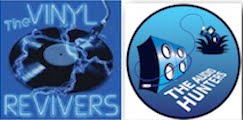

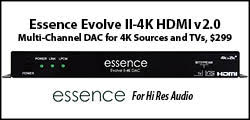

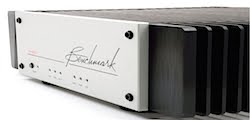


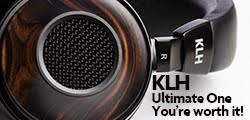
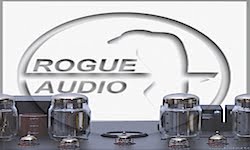

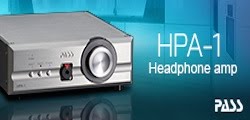


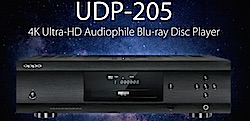
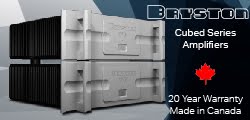

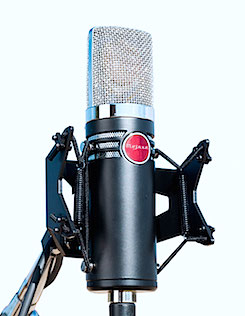
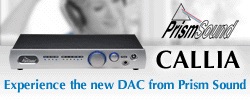
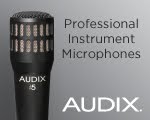

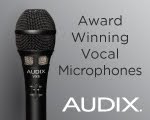
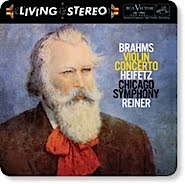






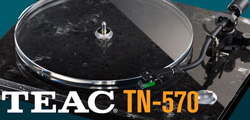





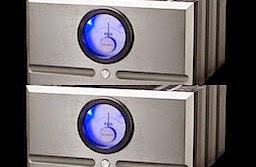



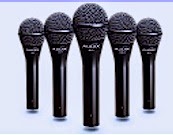


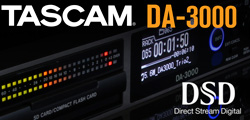

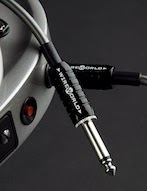

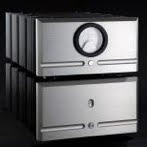









No comments:
Post a Comment